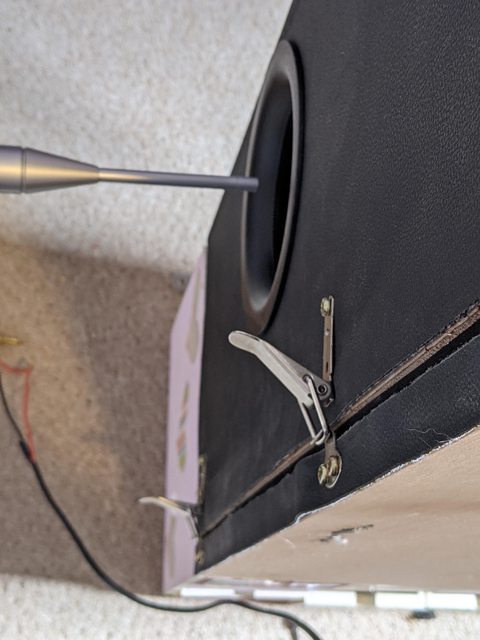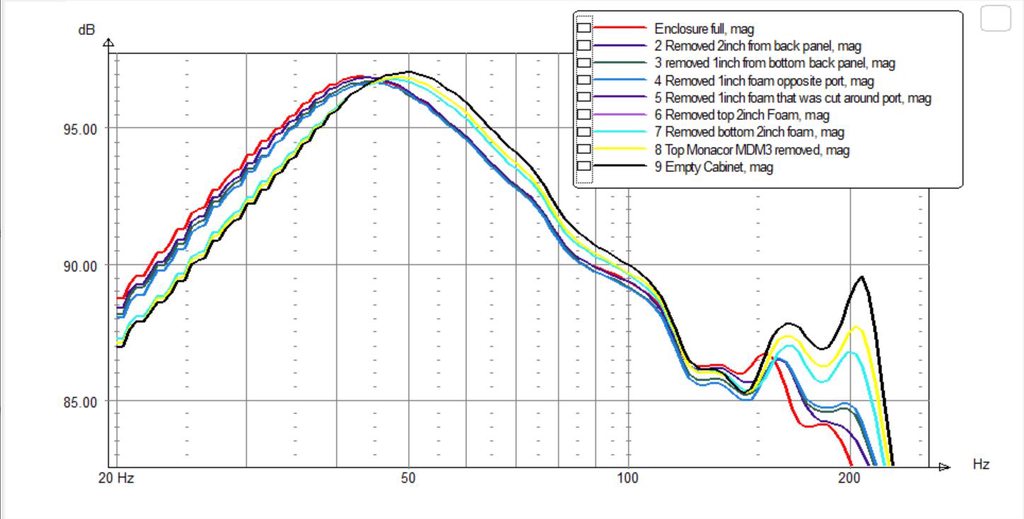Fatmarley
"It appears my intelligence circuits have melted"
Here's a picture of my quick release back panel. It obviously means I don’t have to remove the woofer everytime I want to try a different stuffing arrangements. It also means I can keep the microphone in exactly the same position, for accurate comparisons.

I took a measurement of the port output of the fully stuffed enclosure and then removed one bit of stuffing at a time whilst taking measurements. As you can see, the more stuffing, the lower the tuning. I did try raising the tuning frequency by fitting a shorter port, but it didn't sound right to me. I'm sure over stuffing does something bad, but I'm not sure what that is, it just doesn't sound right.

For some reason not every curve is shown (LspCAD playing up), but it shows stuffing lowers the tuning frequency, and also reduced the 200hz standing wave.

I took a measurement of the port output of the fully stuffed enclosure and then removed one bit of stuffing at a time whilst taking measurements. As you can see, the more stuffing, the lower the tuning. I did try raising the tuning frequency by fitting a shorter port, but it didn't sound right to me. I'm sure over stuffing does something bad, but I'm not sure what that is, it just doesn't sound right.

For some reason not every curve is shown (LspCAD playing up), but it shows stuffing lowers the tuning frequency, and also reduced the 200hz standing wave.

